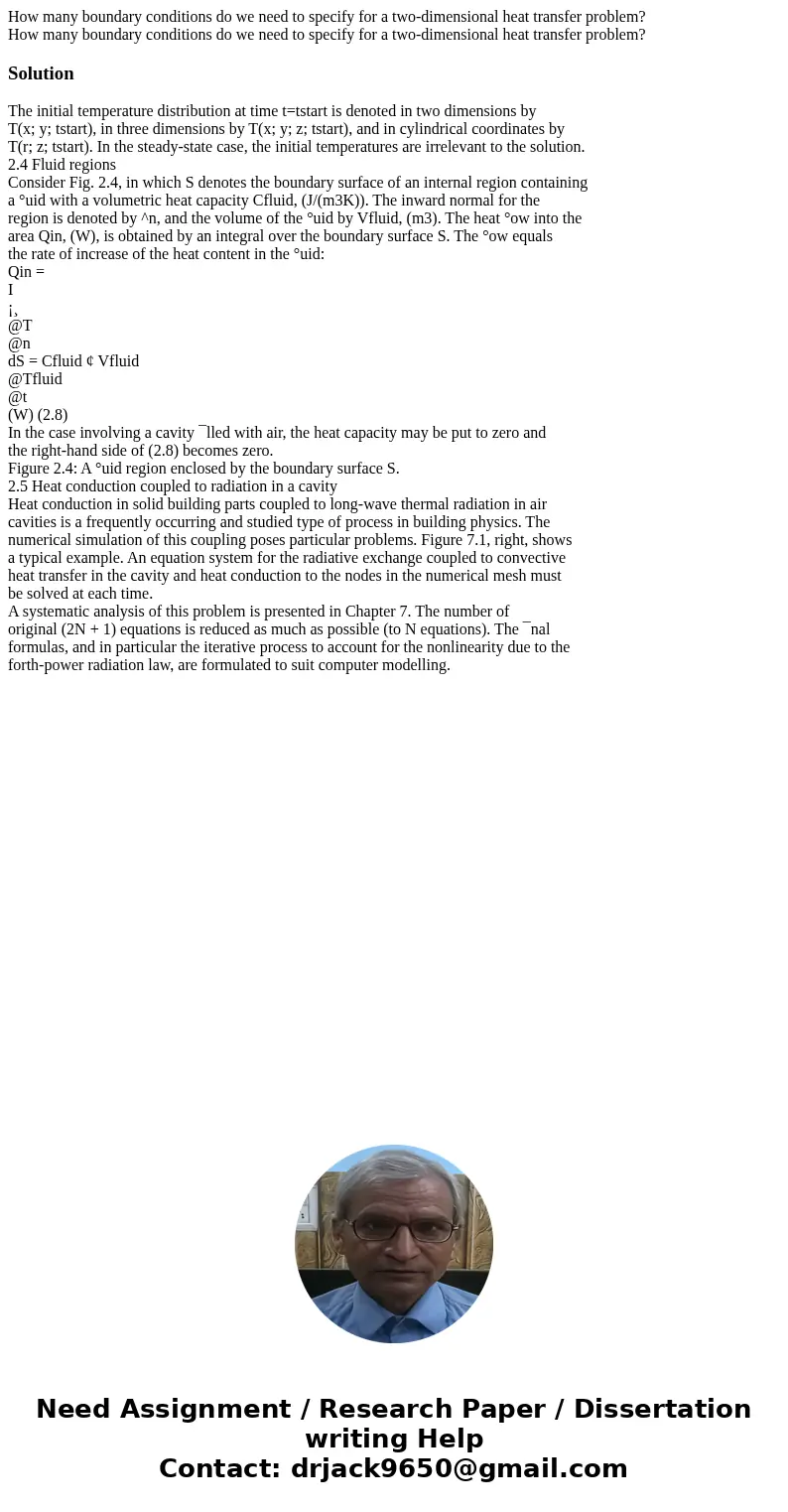How many boundary conditions do we need to specify for a two
Solution
The initial temperature distribution at time t=tstart is denoted in two dimensions by
T(x; y; tstart), in three dimensions by T(x; y; z; tstart), and in cylindrical coordinates by
T(r; z; tstart). In the steady-state case, the initial temperatures are irrelevant to the solution.
2.4 Fluid regions
Consider Fig. 2.4, in which S denotes the boundary surface of an internal region containing
a °uid with a volumetric heat capacity Cfluid, (J/(m3K)). The inward normal for the
region is denoted by ^n, and the volume of the °uid by Vfluid, (m3). The heat °ow into the
area Qin, (W), is obtained by an integral over the boundary surface S. The °ow equals
the rate of increase of the heat content in the °uid:
Qin =
I
¡¸
@T
@n
dS = Cfluid ¢ Vfluid
@Tfluid
@t
(W) (2.8)
In the case involving a cavity ¯lled with air, the heat capacity may be put to zero and
the right-hand side of (2.8) becomes zero.
Figure 2.4: A °uid region enclosed by the boundary surface S.
2.5 Heat conduction coupled to radiation in a cavity
Heat conduction in solid building parts coupled to long-wave thermal radiation in air
cavities is a frequently occurring and studied type of process in building physics. The
numerical simulation of this coupling poses particular problems. Figure 7.1, right, shows
a typical example. An equation system for the radiative exchange coupled to convective
heat transfer in the cavity and heat conduction to the nodes in the numerical mesh must
be solved at each time.
A systematic analysis of this problem is presented in Chapter 7. The number of
original (2N + 1) equations is reduced as much as possible (to N equations). The ¯nal
formulas, and in particular the iterative process to account for the nonlinearity due to the
forth-power radiation law, are formulated to suit computer modelling.

 Homework Sourse
Homework Sourse